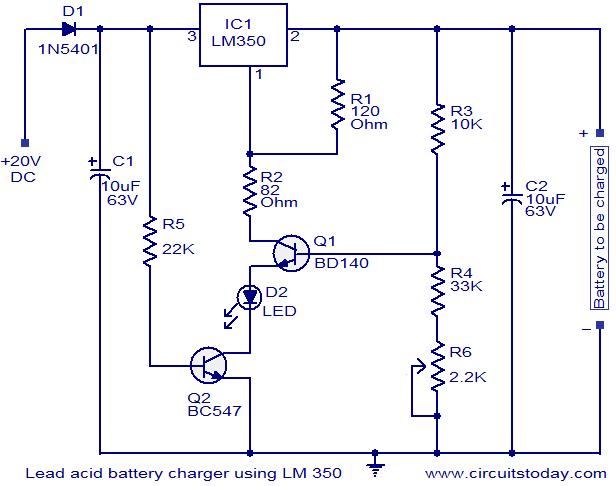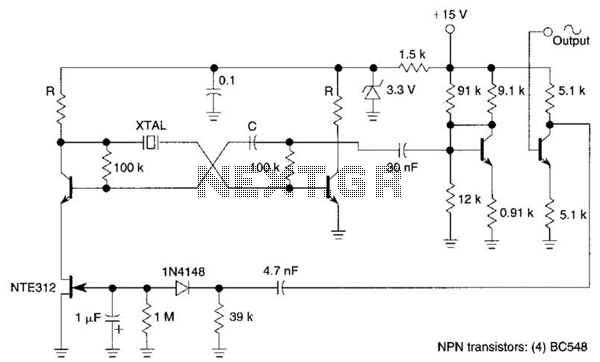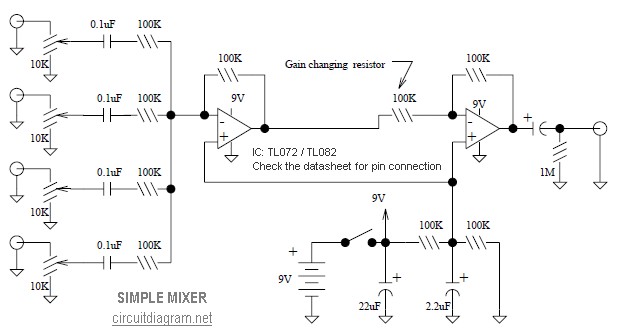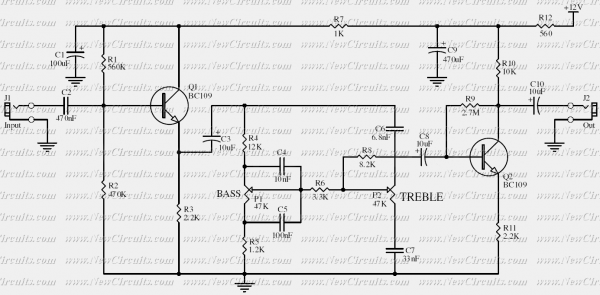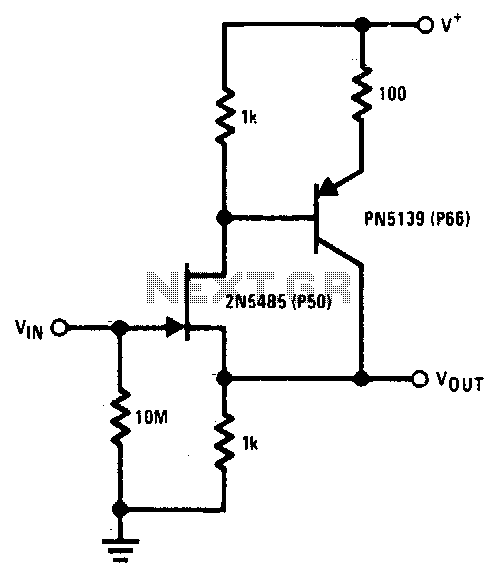
Low Cost Universal Battery Charger Schematic
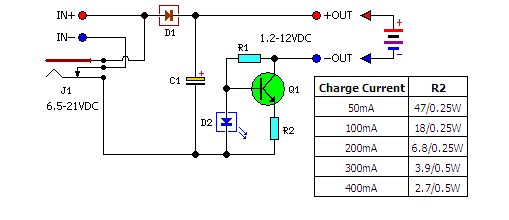
A low-cost solution for charging both NiCd and NiMH batteries is presented. The circuit diagram illustrates a universal charger designed for these battery types.
The circuit for the low-cost universal charger for NiCd and NiMH batteries typically incorporates several key components to ensure efficient and safe charging. The design includes a transformer, rectifier, voltage regulator, and charging control circuitry.
The transformer steps down the AC mains voltage to a lower AC voltage suitable for charging. The rectifier, often a bridge rectifier configuration, converts the AC voltage into a pulsating DC voltage. This pulsating DC is then smoothed out using capacitors to provide a stable DC output.
A voltage regulator is essential to maintain a constant output voltage, which is crucial for safe battery charging. This regulator can be designed to switch between different voltage levels, accommodating the specific charging requirements of both NiCd and NiMH batteries.
The charging control circuitry is responsible for monitoring the battery's state of charge and implementing necessary safety features such as overcharge protection and temperature monitoring. This can be achieved using a microcontroller or dedicated charging ICs that can adapt the charging current and voltage based on the battery chemistry and condition.
The circuit may also include indicators, such as LEDs, to provide visual feedback on the charging status. Properly designed, this universal charger can effectively handle the charging needs of both types of batteries while minimizing costs and ensuring user safety.Low cost solution for charging of both NiCd and NiMh batteries Here is the circuit diagram of a low cost universal charger for NiCD NiMH batteries. This.. 🔗 External reference
The circuit for the low-cost universal charger for NiCd and NiMH batteries typically incorporates several key components to ensure efficient and safe charging. The design includes a transformer, rectifier, voltage regulator, and charging control circuitry.
The transformer steps down the AC mains voltage to a lower AC voltage suitable for charging. The rectifier, often a bridge rectifier configuration, converts the AC voltage into a pulsating DC voltage. This pulsating DC is then smoothed out using capacitors to provide a stable DC output.
A voltage regulator is essential to maintain a constant output voltage, which is crucial for safe battery charging. This regulator can be designed to switch between different voltage levels, accommodating the specific charging requirements of both NiCd and NiMH batteries.
The charging control circuitry is responsible for monitoring the battery's state of charge and implementing necessary safety features such as overcharge protection and temperature monitoring. This can be achieved using a microcontroller or dedicated charging ICs that can adapt the charging current and voltage based on the battery chemistry and condition.
The circuit may also include indicators, such as LEDs, to provide visual feedback on the charging status. Properly designed, this universal charger can effectively handle the charging needs of both types of batteries while minimizing costs and ensuring user safety.Low cost solution for charging of both NiCd and NiMh batteries Here is the circuit diagram of a low cost universal charger for NiCD NiMH batteries. This.. 🔗 External reference

